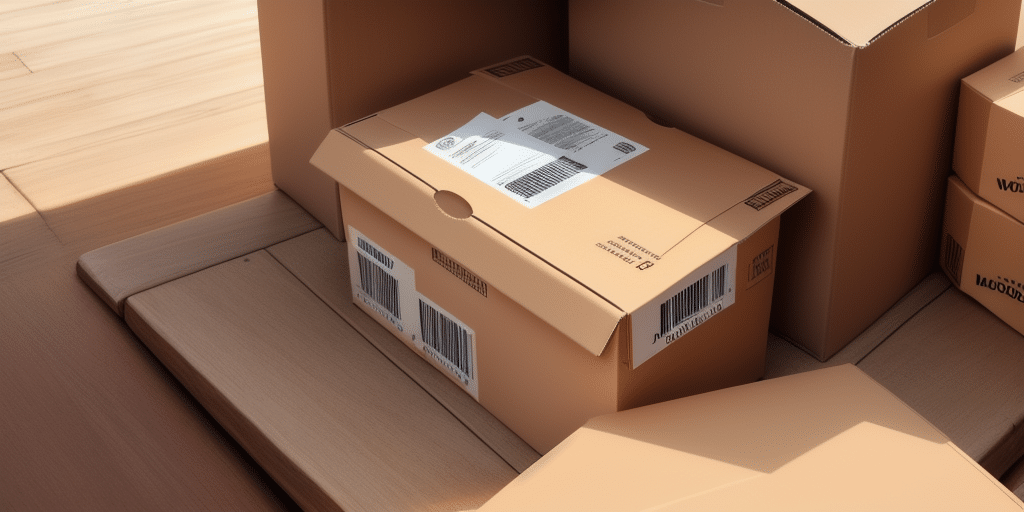How to Handle a Damaged Package
Receiving a damaged package can be a frustrating experience, whether you're an individual shopper or a business owner. Understanding the types of damage, knowing the right steps to take, and being aware of your consumer rights are essential in effectively managing such situations. This guide provides a comprehensive overview of handling damaged packages, supported by data and authoritative sources.
Understanding the Different Types of Package Damage
Package damage can occur in various forms during transit, each requiring specific handling methods:
- Crush Damage: This occurs when packages are stacked improperly, causing them to crush under excessive weight. According to the United Parcel Service (UPS), improper stacking is a leading cause of crush damage.
- Puncture Damage: Sharp objects can pierce the packaging, damaging the contents inside. This type of damage is often seen in packages containing electronics or glassware.
- Water Damage: Exposure to moisture or liquids during shipping can lead to water damage, affecting the integrity of the package and its contents.
- Temperature Damage: Extreme temperatures can cause items to melt, freeze, or spoil, particularly in perishable goods or sensitive electronics.
- Handling Damage: Rough handling can result in broken, dented, or otherwise damaged items due to excessive shaking or jostling.
Understanding these types of damage helps in identifying the cause and taking preventive measures. The PwC Logistics Survey highlights that proper packaging significantly reduces the incidence of damage during transit.
The Importance of Inspecting Packages Upon Delivery
One of the most critical steps in managing damaged packages is inspecting them immediately upon delivery. This proactive approach can save time and ensure that claims are filed promptly:
- Check the exterior for visible signs of damage such as holes, dents, tears, or stains.
- Photograph any damage before opening the package to document its condition.
- Inspect the contents thoroughly, even if the packaging appears undamaged, to ensure that items are in good condition.
According to the Consumer Reports, timely inspection and documentation are vital for successful claims processing.
Steps to Take When You Receive a Damaged Package
If you receive a damaged package, follow these steps to address the issue effectively:
- Contact the Sender: Inform the sender about the damage and provide photographic evidence. They may need to file a claim with the shipping company.
- Notify the Shipping Company: Reach out to the carrier responsible for delivering the package. Provide them with the tracking number, photos, and any relevant documentation.
- File a Claim: Follow the shipping company's claims process, which typically requires detailed information about the damage and proof of value for the items.
- Keep Records: Maintain all correspondence, receipts, and documentation related to the damaged package for future reference.
The Federal Trade Commission (FTC) advises consumers to act quickly and keep detailed records when dealing with damaged packages.
Contacting the Shipping Company: Essential Information
When reaching out to the shipping company, having the right information prepared can expedite the resolution process:
- Tracking Number: Essential for locating your package within the shipping system.
- Shipping Date: The date when the package was sent.
- Description of Damage: Detailed information about the type and extent of the damage.
- Receipts and Invoices: Proof of the value of the items inside the package.
- Photographic Evidence: Clear images showing the damage from multiple angles.
Different shipping companies have varying claim procedures. For detailed guidelines, refer to the United States Postal Service (USPS) claims page.
Documenting Damage: Best Practices
Effective documentation is crucial for successful claims. Here are best practices for documenting package damage:
- Photograph the Entire Package: Capture images of all sides to show the extent of the external damage.
- Detail the Contents: Take close-up photos of damaged items inside the package.
- Record Serial Numbers: For electronics and valuable items, note their serial numbers as part of the documentation.
- Keep Packaging Materials: Retain all packaging, including boxes and cushioning, as they may be required for inspection.
The National Institute of Standards and Technology (NIST) emphasizes the importance of comprehensive documentation in handling claims effectively.
Your Rights as a Consumer When Receiving a Damaged Package
Consumers are protected by various laws and regulations when dealing with damaged packages:
- Right to a Refund or Replacement: You are entitled to receive a full refund or a replacement for the damaged items.
- Right to File a Claim: You can file a claim with the shipping company for compensation related to the damage.
- Protection Under Consumer Laws: Local and federal consumer protection laws may offer additional safeguards.
The FTC provides guidelines on consumer rights related to defective and damaged products.
Filing a Claim for a Damaged Package
Filing a claim effectively requires attention to detail and adherence to the shipping company's procedures:
- Gather Documentation: Collect all necessary photos, receipts, and tracking information.
- Complete the Claim Form: Fill out the shipping company's official claim form with accurate information.
- Submit Promptly: Most shipping companies have a limited time frame for submitting claims, typically within 30 days of delivery.
- Follow Up: Stay in regular contact with the shipping company to monitor the status of your claim.
The USPS claims process provides a step-by-step guide for filing a claim for damaged packages.
Preventing Package Damage During Transit
Preventive measures can significantly reduce the likelihood of package damage:
- Use Sturdy Packaging: Opt for corrugated cardboard boxes that can withstand handling and stacking.
- Proper Cushioning: Utilize bubble wrap, packing peanuts, or foam to protect fragile items.
- Secure the Package: Use strong tape or straps to ensure the package remains tightly sealed during transit.
- Label as Fragile: Clearly mark packages containing delicate items to alert handlers.
The Packaging Strategies publication outlines best practices for minimizing damage during shipping.
The Role of Proper Packaging in Preventing Damage
Effective packaging plays a critical role in safeguarding items during transit:
- Appropriate Sizing: Choose a box size that fits the items snugly to prevent shifting.
- Double Boxing: For highly fragile items, place the item in a smaller box, then place that box inside a larger one with additional cushioning.
- Use Quality Materials: Invest in high-quality packaging materials to enhance protection.
Research from the NASA on packaging methods highlights the importance of proper materials and techniques in protecting delicate equipment.
The Benefits of Insuring Your Packages
Insurance provides financial protection against potential losses due to package damage:
- Compensation for Damages: Insurance can cover the cost of damaged or lost items.
- Peace of Mind: Knowing your package is insured reduces stress during the shipping process.
- Increased Trust: Businesses that insure shipments demonstrate reliability and care to their customers.
The Insurance Information Institute provides detailed information on shipping insurance options and benefits.
Common Mistakes to Avoid When Handling a Damaged Package
Avoiding common pitfalls can streamline the process of dealing with damaged packages:
- Failure to Inspect Immediately: Delaying inspection can complicate the claims process.
- Discarding Packaging Materials: Retain all packaging as it may be required for evidence.
- Not Notifying the Sender or Carrier Promptly: Immediate reporting is often required for successful claims.
- Inadequate Documentation: Insufficient evidence can result in claim denial.
By sidestepping these mistakes, you can enhance your chances of a successful resolution. The FTC offers guidance on best practices for handling damaged packages.
Handling Delicate or Fragile Items in Shipping
Shipping fragile items requires extra precautions to ensure their safe arrival:
- Extra Cushioning: Use additional padding materials like bubble wrap or foam inserts.
- Secure Placement: Ensure items are firmly placed within the packaging to prevent movement.
- Fragile Labels: Clearly mark boxes containing fragile items to prompt careful handling.
- Double Boxing: Place the fragile item in a smaller box, then within a larger one with cushioning in between.
The Packaging Strategies article provides additional tips for shipping delicate goods effectively.
Best Practices for Shipping Items Over Long Distances
Long-distance shipping introduces additional risks that necessitate meticulous planning:
- Select a Reputable Carrier: Choose carriers known for reliability and careful handling.
- Use Robust Packaging: Reinforce packaging to withstand extended transit periods.
- Track Shipments: Utilize tracking services to monitor package progress and respond to any issues promptly.
- Consider Climate Control: For sensitive items, opt for climate-controlled shipping options to prevent temperature-related damage.
The American Express outlines essential best practices for businesses shipping items long distances.
The Role of Technology in Reducing Package Damage
Advancements in technology have significantly improved the handling and tracking of packages:
- Smart Sensors: Monitor conditions like temperature and humidity inside the package to prevent damage.
- Advanced Tracking Systems: Provide real-time updates and alerts for potential issues during transit.
- Automated Handling Systems: Reduce human error by automating parts of the shipping process.
According to a report by McKinsey & Company, integrating technology in shipping operations enhances efficiency and reduces the likelihood of package damage.
Handling International Packages with Care
International shipping introduces unique challenges that require careful management:
- Understand Customs Regulations: Be aware of each country's import regulations to avoid delays or additional fees.
- Accurate Documentation: Ensure all necessary paperwork, such as customs declarations and invoices, are correctly filled out.
- Secure Packaging: Use durable materials to protect packages from varying climates and handling practices abroad.
- Insurance Coverage: Consider insuring international shipments due to the increased risk of damage or loss.
The U.S. Customs and Border Protection provides comprehensive guidelines for shipping internationally, helping to mitigate risks associated with international transit.
Preventing Miscommunication with Shipping Companies
Effective communication is key to resolving issues related to damaged packages:
- Provide Clear Information: Offer detailed descriptions of the damage and include all necessary documentation.
- Maintain Records: Keep copies of all communications and submitted documents.
- Follow Up Promptly: Regularly check the status of your claim to ensure timely resolution.
- Be Clear and Concise: Avoid misunderstandings by articulating your concerns and needs clearly.
The Business Best Practices recommend maintaining transparency and clarity to prevent miscommunication with service providers.
Evaluating the Cost of Shipping and Insurance
Balancing shipping costs and insurance is crucial for cost-effective protection:
- Assess Item Value: High-value items warrant additional insurance coverage.
- Calculate Risk vs. Cost: Weigh the likelihood of damage against the cost of insurance to determine necessity.
- Choose Appropriate Shipping Methods: Faster shipping options may reduce handling and transit time, lowering the risk of damage.
- Leverage Bulk Shipping Discounts: Businesses can reduce costs by negotiating bulk shipping rates with carriers.
A study by Business Insider highlights strategies for optimizing shipping expenses while ensuring adequate protection for packages.
Conclusion
Handling a damaged package involves a series of well-informed steps, from immediate inspection to filing claims and preventing future occurrences. By understanding the types of damage, leveraging proper packaging techniques, utilizing technology, and being aware of your consumer rights, you can effectively manage and mitigate the impact of damaged packages. Implementing these best practices ensures that your shipments are secure and that you are prepared to address any issues that arise during the shipping process.






















